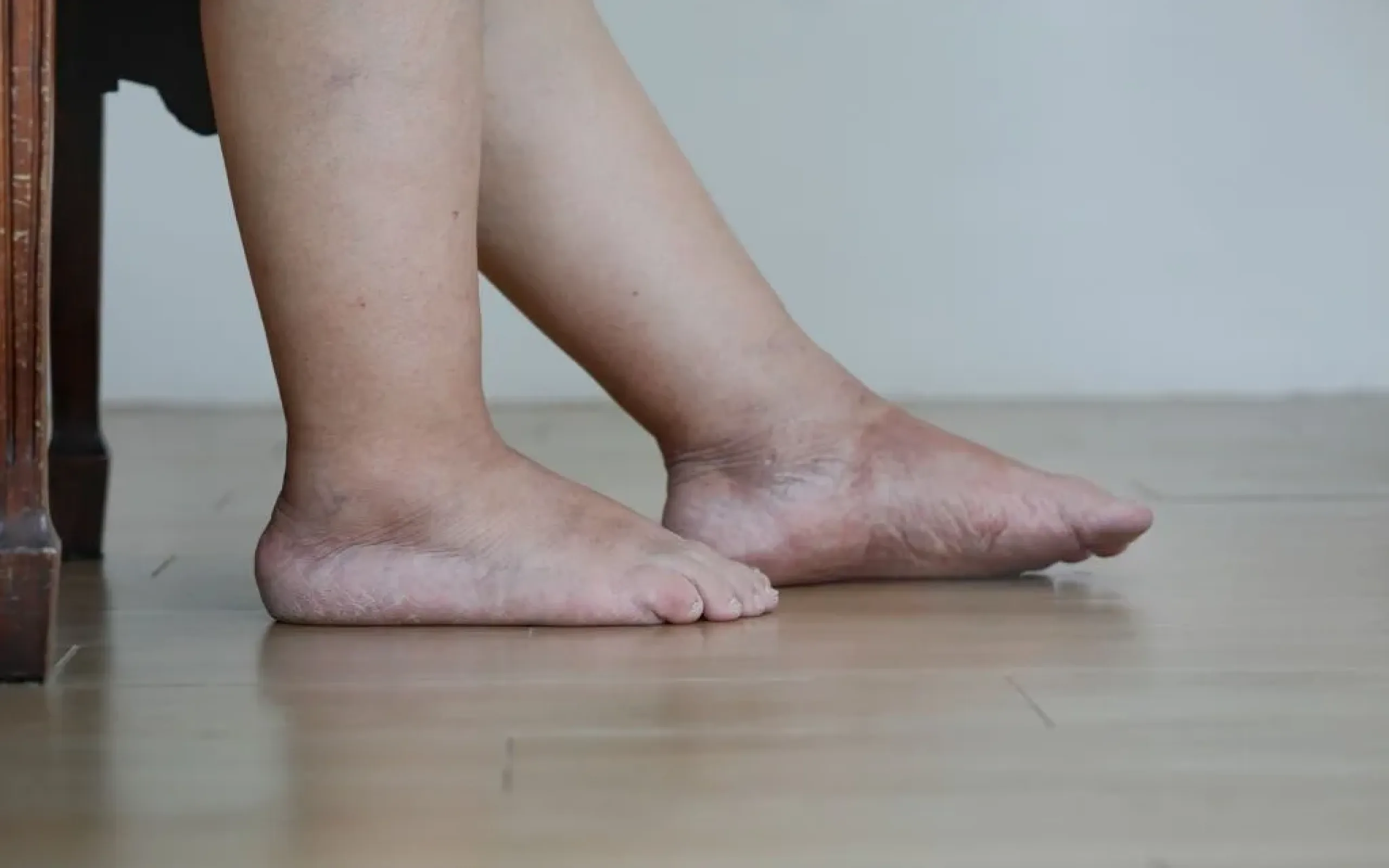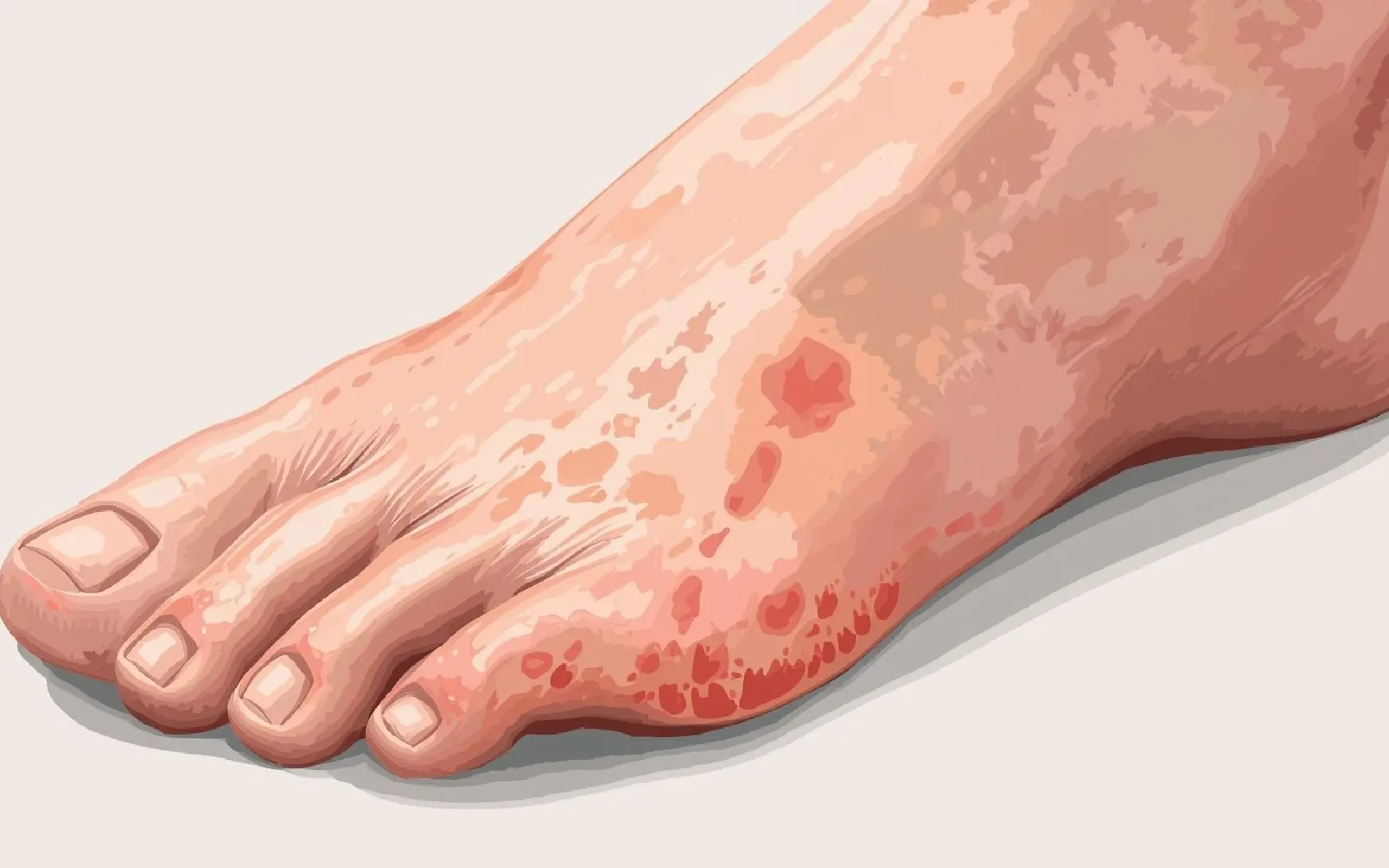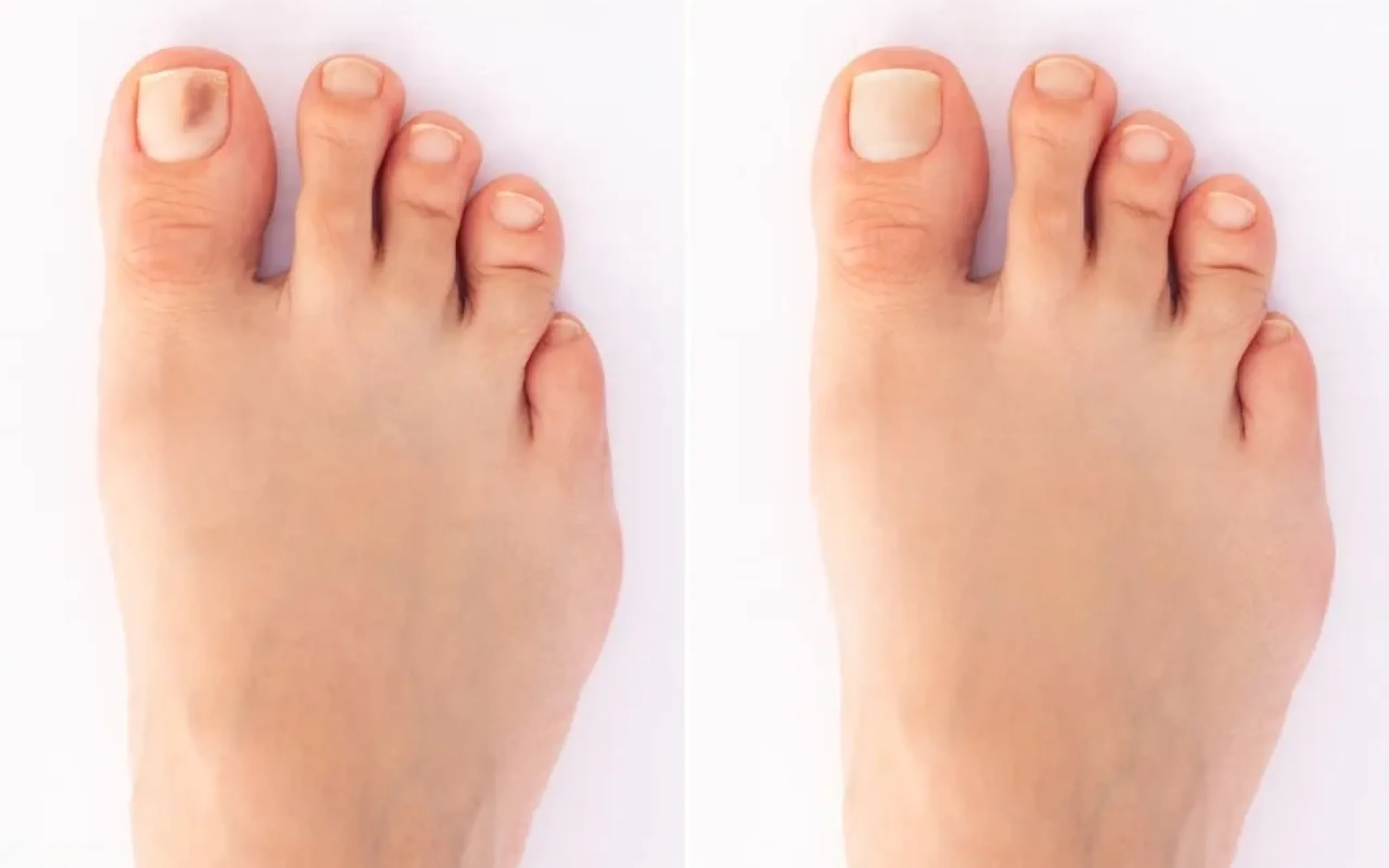Diabetes can affect circulation and nerve sensitivity, making your feet more vulnerable to injury, slow-healing wounds, and infection. Even a small cut or blister can quickly turn into a more serious problem if not treated properly.
At Sydney Podiatry, we provide comprehensive diabetic foot ulcer treatment and ongoing diabetes podiatry care to protect your long-term foot health. Our podiatrists perform detailed diabetic foot assessments, check nerve function and blood flow, manage wounds, and recommend appropriate footwear to keep your feet healthy and active.
Whether you’re experiencing numbness, tingling, or simply want to prevent complications, our goal is to keep you moving safely and confidently.
Diabetes podiatry focuses on the specialised care of the feet and lower legs for people living with diabetes. Reduced blood flow and nerve function can cause small problems—like nail changes, dry skin, or blisters—to become ulcers or infections if left untreated.
Our diabetes podiatrist focuses on:
Perform full foot exams to assess circulation, nerve health, and skin condition.
Treat issues such as thickened toenails, dry feet, swelling, or soreness related to diabetes.
Help prevent complications such as diabetic foot ulcers, infections, or tissue breakdown.
Offer advice on safe footwear, diabetic socks, and effective home foot-care routines.
Consistent podiatry care is a key part of diabetes management, helping to reduce risk, support healing, and maintain comfort and mobility.

Living with diabetes means your feet require ongoing care and professional attention. High blood sugar levels can gradually damage the nerves in your feet — a condition called diabetic neuropathy — and reduce blood circulation. Poor circulation makes it harder for cuts, blisters, or sores to heal, while nerve damage can reduce sensation, meaning you might not notice small injuries right away.
Because of this, people with diabetes are more prone to foot complications, including blisters, dry skin, nail changes, and diabetic foot ulcers. Even a minor issue, such as a blister from shoes or a pressure sore, can quickly develop into a more serious condition if untreated. Without timely diabetic foot ulcer treatment, infections or tissue damage may occur, potentially leading to long-term mobility problems.
That’s why regular visits to a diabetes podiatry specialist are so important. Professional podiatry care helps prevent complications, maintain healthy circulation, and protect your long-term foot health.
At Sydney Podiatry Foot and Ankle Clinic, we provide expert diabetes podiatry and comprehensive diabetic foot care to help patients manage their foot health with confidence.
Our goal is to prevent complications, detect issues early, and keep your feet healthy for the long term.
Whether you’re experiencing foot pain from diabetes, dry or cracked feet, swelling, or diabetic toenail problems, our tailored podiatry services ensure you receive the care and guidance you need.
Comprehensive diabetic foot exams – Thorough assessments of circulation, nerve function, skin condition, and nails to identify risks such as diabetic foot ulcers, red patches, or sores on feet from diabetes.
Our early detection approach helps prevent complications and promotes long-term mobility.
Wound and ulcer management –Specialised diabetic foot ulcer treatment for conditions like ulcers on feet from diabetes, diabetic toe ulcers, and pressure sores.
We create personalised care and wound-healing plans to reduce infection risk and support faster recovery.
Nail and skin care – Gentle, professional treatment for diabetic toenails, thickened or fungal nails, and dry feet.
Regular diabetes podiatry visits reduce discomfort, prevent infections, and help maintain healthy skin and nails.
Footwear and orthotic advice – Our podiatrists recommend diabetic shoes, socks for diabetics, and custom orthotics to protect your feet, improve balance, and reduce pressure points.
Proper footwear is key in preventing injuries and ulcers.
Preventive care and education –We provide guidance on daily diabetic foot care routines, managing blisters and calluses, and recognising early signs of infection or neuropathy.
We aim to empower you to take control of your foot health between visits.
With regular visits to our diabetic foot clinic in Sydney, many serious risks associated with diabetes can be reduced or completely avoided.
Our team of experienced Sydney podiatrists is dedicated to helping you stay mobile, safe, and pain-free — every step of the way.
If you are living with diabetes, even the smallest changes in your feet should never be ignored. High blood sugar can slow down healing and affect circulation, which means minor injuries may turn into major problems if left untreated. A podiatrist can detect issues early and provide treatment before they become serious.

Ulcers on feet from diabetes or wounds that are slow to heal – any cut, scratch, or sore that does not improve within a few days should be checked. Delayed healing can be a sign of poor circulation or infection.

Sores on feet from diabetes, blisters, or skin ulcers that are red, swollen, or painful – these can develop into diabetic foot ulcers if not treated quickly.

Red patches on feet diabetes or red toes diabetes – redness may point to infection, inflammation, or reduced blood flow.

Swelling in feet or ankles, especially if sudden or painful – this could signal circulation problems, infection, or other complications linked to diabetes and feet swelling.

Foot pain in the morning diabetes that does not improve with rest – pain may be caused by neuropathy, circulation issues, or pressure sores.

Signs of infection – such as pus, a foul odour, warmth around the area, or redness that spreads up the foot or leg. These infections can progress quickly in people with diabetes.

Changes in toenails or skin – thickened or ingrown nails, fungal nail infections, dry feet diabetes, or cracks in the skin increase the risk of infection.

Numbness, tingling, or burning sensations – symptoms of diabetic neuropathy that may reduce your ability to feel pain or injury in your feet.
Our podiatrists provide a complete, step-by-step assessment to ensure your feet receive the care they need.
1. Medical Review
Your podiatrist begins by reviewing your overall diabetes history, including:
This helps us design a personalised diabetic foot care plan suited to your health and lifestyle.
2. Neurologic Assessment – Nerve Testing
Because diabetes can cause neuropathy (nerve damage), your podiatrist will:
Early nerve screening is key to preventing complications such as foot ulcers and loss of sensation.
3. Vascular Assessment – Blood Flow Testing
Healthy circulation is vital for healing. High blood sugar can affect blood flow, leading to swelling, redness, or delayed wound recovery.
During this step, your podiatrist will:
4. Physical Examination
Your feet are carefully examined for:
5. Treatment & Immediate Care
Depending on your needs, your podiatrist may provide:
Our gentle, evidence-based approach supports faster healing and greater comfort.
6. Personalised Diabetes Foot Care Plan
At the end of your visit, you’ll receive a custom diabetes podiatry plan that outlines:

Wear comfortable, well-fitting shoes or diabetic shoes to help your podiatrist assess pressure areas and foot support.
Bring details of your diabetes history, medications, recent blood sugar results (HbA1c), and any past foot issues such as ulcers or infections.
Write down any foot changes you’ve noticed, such as swelling in feet, red patches, foot pain in the morning diabetes, or sores on feet from diabetes.
Prepare any questions about daily footcare, socks for diabetics, or shoes for diabetics so you can leave with a personalised care plan.
Comprehensive assessment of your child’s feet, ankles, and gait.
Personalised care for your child's needs, explained in simple terms.
Guidance to reduce risk and support healthy, happy feet.
A podiatrist uses a combination of diagnostic tools and techniques, such as sensory testing, nerve conduction studies, and physical exams, to assess nerve damage in the feet. This comprehensive evaluation helps identify any areas of nerve impairment, such as neuropathy, and determine the best course of treatment.
Common signs of nerve damage in the feet include numbness, tingling, burning sensations, sharp or shooting pain, and weakness. You may also notice difficulty feeling temperature changes or a reduced sense of balance. If you experience any of these symptoms, it's important to consult a podiatrist for a thorough evaluation.
Treatment for nerve damage in the feet may include pain management through medications, physical therapy, custom orthotics, or lifestyle changes to improve circulation and reduce pressure on the nerves. In some cases, more advanced therapies such as nerve blocks or surgery may be considered, depending on the severity of the condition. Your podiatrist will work with you to develop a personalised treatment plan to address your specific needs.
Medicare offers coverage for various foot care treatments under primary care plans. Our team will help you navigate and utilise your Medicare benefits, ensuring you receive the necessary treatments while making the most of your coverage. We work with you to create a customised care plan that aligns with your needs, helping you access affordable foot care.
Medicare generally covers a range of foot care treatments, including those related to diabetes management, wound care, and certain surgical procedures. The specific coverage depends on your individual health needs and plan. We will work with you to determine which treatments are eligible for Medicare funding and develop a plan based on your specific condition.
Our team takes the time to assess your individual foot care needs and works with you to create a customised treatment plan. We’ll guide you through the process of obtaining coverage under Medicare and help you make informed decisions about the treatments best suited to your condition and goals.